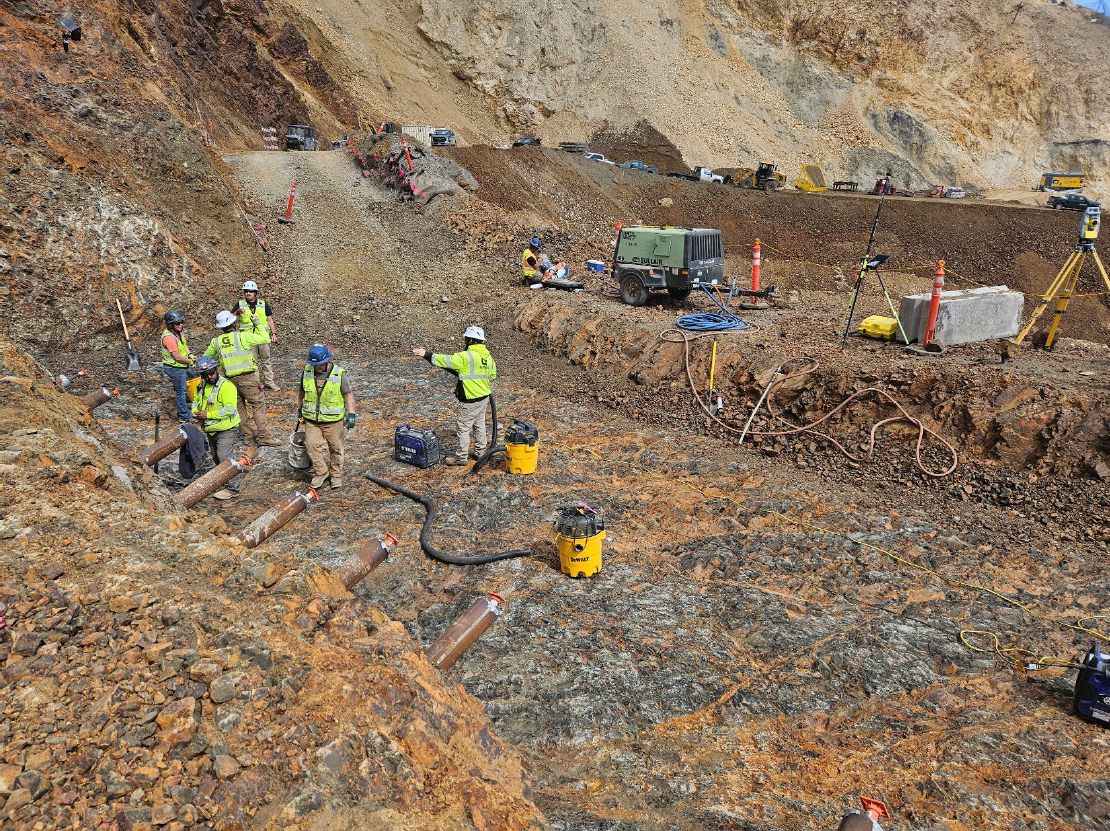The contractor is in the final stages of excavating for the west abutment. This stage, known as “dental excavation” results in exposure of a clean, relatively level rock surface on which the contractor will then place a thin concrete leveling pad. The leveling pad, once completed, provides a smooth surface to support the 13 precast concrete blocks (each measuring 4-1/2 feet tall, 4 feet wide, and 15 feet deep) that comprise the abutment. Photo below.
 Photo courtesy BGC Engineering/FHWA
Photo courtesy BGC Engineering/FHWAThe contractor has also resumed installation of thermosiphons at the east abutment. Previously, they installed the 13 thermosiphons that reside west of the east abutment and are now working on installing the remaining 10 located east and south of the abutment. Installation involves drilling roughly 110 feet below the ground surface, then lowering (using a crane) the pre-fabricated thermosiphon into the drilled hole. With the thermosiphon held in position, the drilled hole is filled with cementitious grout, permanently anchoring the thermosiphon in place and ensuring good contact with the surrounding rock and soil. At the time of installation, the thermosiphons are filled with pressurized nitrogen which will later be bled off and replaced with carbon dioxide, the working fluid that will enable the thermosiphons to transfer heat out of the subsurface and maintain the underlying permafrost in a frozen condition. The general principles of thermosiphon operation are explained on the thermosiphon supplier’s website, https://arcticfoundations.com/two-phase-thermosyphons/.
